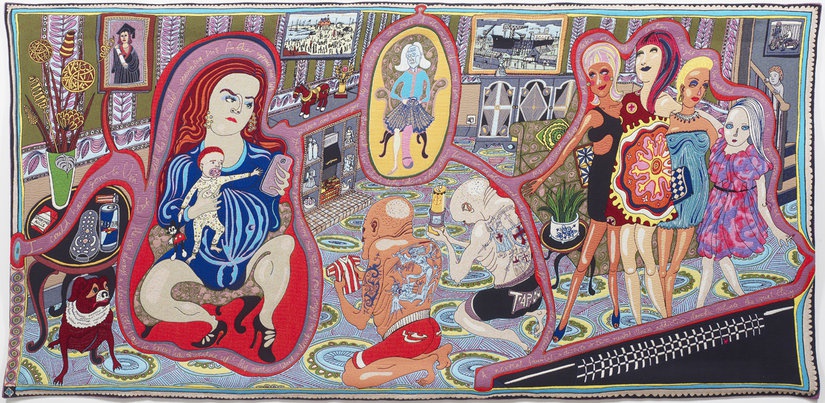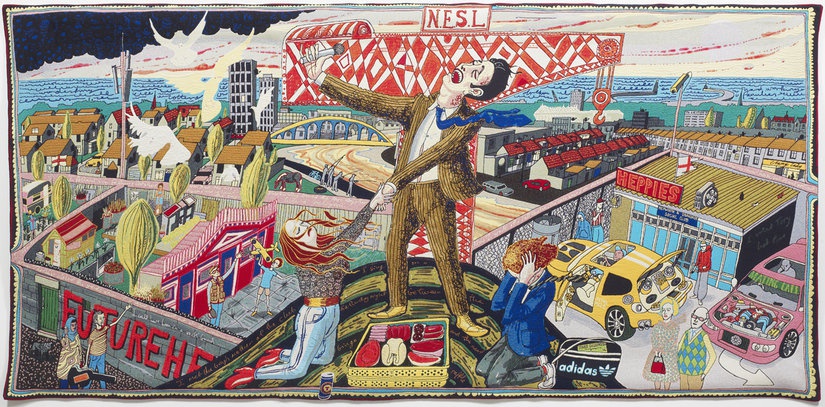National Identity: The identity of a nation as a cohesive whole, usually represented by distinctive traditions, culture and language.
There is a lot of speculation over the fact that England has no 'national identity', and that any past symbols of England are constantly being changed and influenced by those of other countries (For example: The likes of McDonalds and Starbucks are cropping up everywhere, both of which are American brands).
However, this isn't entirely true. England is a vast country, and many different parts have different icons and symbols which represent their locality. In retaliation to the abundance of McDonalds which seem to be appearing out of nowhere, England also has a sense of local identity in the likes of Gregg's, a bakery which was founded in the North East of England and has since grown immensely. London, our capitol, has it's quirks too. Their red double decker buses having a similar representation to the yellow taxis always depicted in New York. It could be argued that our identity also resides in the likes of our beaches, typical cold weather, full English breakfasts (the proof is in the name), "posh accents" and our love of a hot cup of tea. While many of these may be stereotypical, there remains at least some truth in them and thus a sense of 'identity' is created for our nation.
Other cultural icons include:
- The Barbary Lion - Frequently depicted in English Heraldy, sculptures can be found at Trafalgar Square.
- The Rose - Considered our national flower and is usually portrayed as red in colour.
- The Oak - National tree of England, represent strength and endurance.
- Rost Beef and Yorkshire Pudding - Largely consumed across the nation and could be considered the nation dish, however, fish and chips is also known as and English cuisine by those all over the globe.
- Robin Hood - A heroic outlaw in English folklore, recognized as a national identity. Also links in with the oak tree (Sherwood Forest).
Grayson Perry is an English artist known mostly for his oddly attractive ceramic-vases. In correlation with this research, he also produced a series of tapestry works which "elevate the commonplace dramas of modern British life". These tapestries were primarily influenced by 'A Rake's Progress' by William Hogarth (1732 - 33) and two are composed from Perry's first hand experiences and meetings of characters within Sunderland.
 |
| The Adoration of Cage Fighters (2012) |
 |
| The Agony in the Car Park (2012) |
Both tapestries include iconic and aesthetic references to Sunderland, reflecting things such as our historical background with the shipyard and the mines, our location on the coast, our apparent taste in brands (Adidas) and lager, and even the makings of a typical British roast (the contents of the picnic basket in 'The Agony in the Car Park'). Even the group of women depicted in 'The Adoration of Cage Fighters' are based off of physical figures which Perry met whilst here. All of these individual aspects emulate a sense of Sunderland, some factors more flattering than others, and thus cast an impression of our identity. Perry's depictions of our thriving city are, in a way, slightly ludicrous paired with his style of work, but it's definitely thrilling to see our local identity broadcast in such a manner as it truly does imitate the spirit of our city.
Thus comes the conclusion that England does, after all, maintain some sense of identity. Even as a smaller city up in the North East of the country, we have shown a distinct impression of who we are and what we're about, and this is reflected in the likes of Grayson Perry's artwork. We may not have the most well-defined cultural icons, but taking into consideration how vastly identifiable we are by our stereotypical love for tea and a good beef roast, it's safe to say we will remain distinguishable no matter how many McDonald's, Starbucks' or high street brands take their places within our nation.
Sources used:

No comments:
Post a Comment